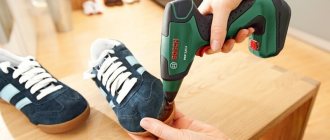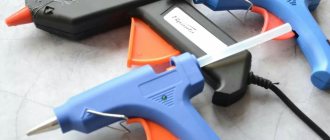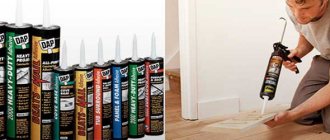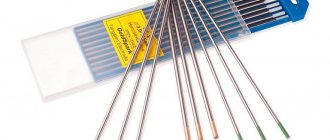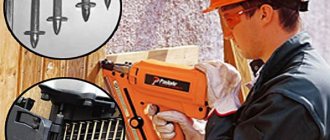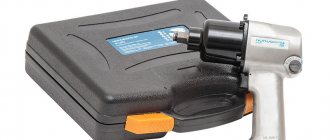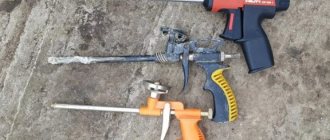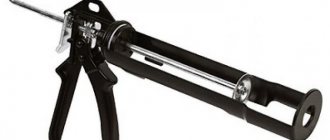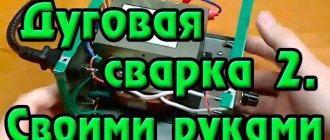Most hot melt guns that use hot melts for gluing are very similar to each other, both in the operating principle and in the general design of the design. The only differences are the quality of materials and workmanship, service life and ergonomics. This coincidence can be explained simply; the main secret of high-quality gluing lies in what kind of glue gun refills are used in the work. Manufacturers of branded pistol brands always equip their models with branded adhesive materials. This is not charity or advertising. This is done so that the user gets an idea of how the machine works using high-quality hot-melt glue, what consumables to look for, and how to choose a glue stick for a glue gun.
What is a glue stick
Consumables for a glue gun are flexible polymer rods up to 20 cm long and 7 mm or 11 mm in diameter. Thinner rods are usually used for soldering with low-power home soldering guns. Hot-melt glue rods with a diameter of 11-12 mm are used for more powerful and productive guns, most often professional and semi-professional types.
The material is elastic and at the same time durable, it is very difficult to break the glue stick with your hands; you can bend it slightly, and some brands can even be rolled into a donut.
Anyone who regularly uses a hot glue gun at home or in professional activities notes some features of the consumable:
- The adhesive cartridge placed in the gun holder does not melt and does not lose its properties, even if the gun sits in standby mode for half a day. At the end of the work, the thermal rod remains in the holder and does not need to be removed or replaced. If you need to glue, the gun is simply plugged in, and after five minutes the device is ready for use;
- There is no surface wear, hot melt material does not cause erosion, oxidation or burning of the melting chamber. The gun will work until the heater burns out;
- The shelf life of consumables with proper storage is practically unlimited; the polymer is not afraid of freezing or short-term heating without melting. Some brands of glue sticks used for high-strength, rigid adhesives can absorb moisture. In this case, it is enough to dry the adhesive material in the sun, and it is ready for use;
- The relatively soft rod retains its qualities until it enters the melting chamber and turns into a melt. During the cooling process, structural transformations occur in the polymer; from an elastic and soft material that feels very much like a piece of hard silicone, the drop turns into a very hard and rigid “glass” bead.
The material of the rods is not thermosetting; when reheated, it can be melted, but due to the increase in viscosity, it is almost impossible to squeeze it through the nozzle of the melting chamber; a very large force will be required.
Why do you need to divide hot melt adhesive by diameter?
This also determines the choice of the diameter of the glue gun rods by the developers. The smaller the diameter, the less effort is required to squeeze the melt out of the melting chamber. To work with the refills for a 7 mm glue gun, very little effort is required, which means that the gun can be used by almost any adult or even a child.
Seven-millimeter rods are used in low-power and non-hot hot glue guns with small dimensions and weight. The melting point of such material rarely exceeds 160°C, so the gluing device is very light and economical. They are convenient for gluing paper, film, packaging goods, and temporarily fixing parts on the desktop. If you need to glue tiles on the ceiling, it is much more convenient to do this with a glue gun with a seven-millimeter “cartridge”.
It seems convenient, but the productivity is only 10-15 g/min, which is enough for spot gluing, but not enough for full gluing. Therefore, for gluing metal, glass, wood, and plastic, 11 mm glue gun rods are used. In addition to the increased productivity to 25-30g/min, the board temperature increases from 160°C to 195°C. The glue gun turns out to be twice as large and heavier, but it can glue almost anything that can withstand high temperatures.
Note! Glue sticks of 7 and 8 mm, as well as 11 mm and 12 mm are available for sale, which creates some confusion when purchasing consumables.
Some glue gun manufacturers deliberately produce very inexpensive models with reduced tube diameters, for example, 7 mm and 11 mm, encouraging buyers to purchase only branded sticks. Therefore, before making a purchase, you should clarify three parameters:
- Melting temperature of the glue stick and compare it according to the passport with the characteristics of the gun;
- For what materials is the selected brand of hot-melt adhesive rod intended?
- The exact diameter of the rod, otherwise it may happen that your glue gun has a 7 mm clip, they offer to buy 11 mm.
You can even take with you an old package of thermal rods or look at the passport for the gun, which should contain all the necessary data on consumables. Otherwise, you will not be able to exchange or repair a burnt hot-melt glue gun under warranty.
Glue gun refill sizes
Another important parameter of glue gun cartridges is their size: diameter and length. The most popular rods are 7 and 11 mm in diameter. They are suitable for solving many household problems and are used in heat guns with low power, small dimensions and weight. They are convenient for gluing light parts, temporarily fixing elements, and minor repairs. For professional tools, glue sticks with a diameter of 12, 15, 43 mm are produced.
Black glue sticks of different lengths
Glue sticks of different diameters
As for the length of the rod, it can be from 4 to 30 cm and affects the duration of use of one cartridge. Therefore, when choosing, you should focus on the parameters of your gun, as well as the amount of work performed.
How to choose the right glue sticks for the job
Sometimes the situation is the opposite, for example, you have to look for a solution what to do if the rods are small and the glue gun is 11 mm. The situation is not the most critical, but high-quality glue sticks are quite expensive, and it would be unwise to refuse to use them. For example: one universal Boshev adhesive material for 11 mm costs 600-1000 rubles. per piece, but it’s enough for 4-5 sticks.
If the rods are smaller in diameter than the pistol clip, then the problem can be solved by slightly improving the trigger:
- The pistol body is disassembled and the swinging frame attached to the trigger is removed;
- The ring on the frame is wound with thin, 1-2 mm wire in PVC insulation;
- Reassemble the device body in the reverse order.
Important! If all manipulations are performed correctly, the gun will work flawlessly; moreover, the force on the trigger will be half as much as usual, so the work will be more comfortable.
It is clear that any experiments with glue guns are an extreme case. There is a risk of damaging the most vulnerable component - the heating system; it will not be possible to repair the hot glue gun, and the expensive device will be scrapped.
Hot glue gun: design and operating features
The shape of a glue gun is similar to a regular gun, which is why it got its name. The device is filled with a glue stick, which, when heated, melts to a fluid consistency. The rod must be installed from the back of the tool, tucking it into a special receiver. During operation, its tip enters the heating module, and in about 4-5 minutes the glue melts. When the trigger is pressed, the composition comes out of the nozzle onto the surface of the product.
The design of the glue gun includes the following elements:
- Heating module. Located in the barrel, it is a metal reservoir, at the bottom of which there is a heating unit. More expensive models have multiple heating units to melt the glue.
- Ring pusher. This is the glue supply mechanism that most often breaks, mainly due to excessive force by the user.
- Clutch. It looks like a tubular receiver located under the glue heating chamber. The coupling is needed to seal the system elements so that the molten composition does not get into them.
- Nozzle (nozzle, nozzle). Allows you to direct the flow of glue in the desired direction. There is a shut-off valve inside that prevents the solution from flowing out freely. The outside of the nozzle is coated with a heat-resistant alloy that protects it from damage. This part of the gun must be cleaned regularly to remove any glue residue.
Distinctive features of hot glue guns
When choosing, you need to pay attention to the quality of the hot glue gun body. The box itself should be made of durable polymers that can withstand heat without burning your hand. There are models with a viewing window where you can see the remaining glue. The handles often have anti-slip inserts, and the package includes a stand. An interesting design is the spray gun, which significantly speeds up the application of glue to large surfaces. When purchasing a gun, you must compare the diameter of its barrel with the size of the glue stick - they must match.
Required glue heating temperature
The glue begins to melt already at +80 degrees, but the process will be very slow. Therefore, guns make it possible to melt the material at +150…+200 degrees, which seriously increases productivity. In expensive professional models, the heating temperature of the glue reaches +500 degrees.
Glue feed speed
Typically glue guns can dispense 5-20g of glue per minute, although the rate depends on heating time and user need. The upper limit of the indicator, in fact, is the limit of the capabilities of both the device and the master, otherwise there is a high risk of making a mistake. However, special high-speed guns (30 g of glue per minute and above) are sold for professionals.
What are glue sticks made of?
To make the principle of hot melt bonding more universal, manufacturers produce several main types of glue sticks:
- Ethylene vinyl acetate polymer has high fluidity and very high adhesion; it adheres well to any porous surface. The melting point is only 78-80°C, so EVA is used only in low-temperature glue guns. The color of the ethylene vinyl acetate thermal rod is whitish, translucent;
- Polyamide plastic is characterized by an increased melting point of 150-155 ° C, the adhesive melt is very viscous and viscous, but after the glue hardens, a seam is formed that is 40-50% stiffer and stronger than EVA. Most often, PAP is used in the industrial assembly of cladding and upholstery for automobiles and household appliances;
- Polyolefin material is the most refractory of all hot melt adhesives, the melt formation temperature is 180°C. The seam is very rigid, with low adhesion, so it is used mainly for spot gluing packaging;
- Modified silicone, the most plastic and fusible, has a melting point of up to 100 ° C, has high transparency, the frozen seam perfectly withstands tearing and shearing loads. A silicone stick for a glue gun is used for gluing fabrics, linoleum and in handicrafts.
High- and low-density polyethylenes also have very similar technological characteristics; often the cheapest adhesive sticks are made from granulated polyethylene. The quality of the seam is poor; when working on cheap machines, an oily smell may appear in the air.
Purpose of hot melt adhesive
The above cartridges for glue guns are used in production and professional activities, where it is necessary to carry out voluminous work in a short period of time.
Granular hot melt adhesive is often used on automatic and semi-automatic lines for the production of trays, cardboard boxes, promotional materials, and book and magazine products.
In addition, similar adhesive compositions are used for gluing non-woven materials, including mattress spring blocks, wood, leather and even stone.
In addition to its use in production and construction, hot-melt adhesive has shown itself to be an indispensable component of design, in particular floral works, homemade products and crafts.
Thanks to fillers such as zinc oxide, titanium dioxide, calcium carbonate and others, the required color of the composition and its properties are formed, which allows you to select consumables for specific tasks.
Hot melt adhesive material
Hot-melt adhesive consists of 50% thermoplastic polymers, and the rest of the mass is occupied by plasticizers and resins.
Depending on the base, the following adhesive compositions are distinguished:
- Hot-melt adhesives based on ethylene vinyl acetate (EVA) have become widespread primarily due to the ratio of cost to quality. They can be safely called universal, as they are suitable for joining many materials, including cardboard, wood, plastics, fabrics and even ceramics with metal. Among the advantages of EVA hot-melt adhesives, one should note high rates of fluidity, adhesion and stickiness, short hardening time; they are used exclusively in low-temperature equipment (including hot-melt guns) due to the melting point of 78-80°C.
- Polyamide (Polyamide, PA, PAP) - due to their properties, they are used where it is necessary to meet special requirements for the materials being bonded. They are characterized by a melting point of 150°C; they are used in the assembly of household appliances and car cladding, as they have a viscous and viscous consistency, and the seam after hardening is half as rigid as that of the previous version. Suitable for products containing natural or synthetic resins.
- Compositions based on polyolefin (Polyolefin, PO) - compared to EVA, they have high heat resistance, adhesion and cost-effectiveness. In addition, they have increased flexibility at sub-zero temperatures. The record melting point among similar compositions is 180°C. They are used for spot gluing of packages, and are applied by spraying or the linear-spot method.
- Options with residual stickiness, pressure-sensitive (Pressure-Sensitive Adhesives, PSA) - retain the stickiness of the surface, therefore they are preferable for working with surfaces that have a large area, in particular when it comes to difficult-to-glue materials. Used in construction and industry.
- Medium Pressure Sensitive (EPSA) - suitable for bonding heat-sensitive materials and parts with a large surface area. These formulations are based on alpha poly-olefins (APAO), which can maintain tack for 6 minutes.
- Polyurethane (Reactive Hot Melt Adhesives, PUR) - used in woodworking, automotive, electronics, and printing industries. The reason for this is the special properties, including the highest adhesion, flexibility at sub-zero temperatures, heat resistance and resistance to solvents. The polymerization time strongly depends on external factors and can last up to 2 days.
Among thermosetting adhesives, POR options should be noted.
They are distinguished by their better ability to adhere to untreated surfaces, such as polypropylene and polyethylene.
In POR and PUR, polymerization is irreversible, unlike thermoplastic adhesives.
Dimensions and weight of hot melt adhesive consumables
Hot-melt adhesive in the form of cylinders, or rather pins, is manufactured with precise diameter, which ensures the reliability and safety of glue guns.
The use of pins of non-standard sizes can cause problems with the adhesive equipment.
Variants with a diameter of 43 mm and a length of 4 cm have become widespread.
As for the sizes of granules and pillows, they are approximately the same from different manufacturers; they may have an irregular shape, given that small deviations are acceptable.
Consumption
The consumption of hot-melt adhesive directly depends on its type, the thickness of the applied layer, the type of surfaces to be bonded and other factors, for example, the equipment used and the application method.
For spot application, the average consumption of 1 kg of hot-melt adhesive is:
- For a point with a diameter of 24 mm – 730 points.
- For 18 mm – 1530 points.
- For 12 mm – 3400 points.
- For 6 mm – 6620 points.
Classification of glue sticks
In order to simplify the handling of hot-melt adhesive materials, a color classification of consumables has been adopted. That is, you can choose the appropriate version of the hot-melt base based on the manufacturer’s markings and the color of the rod. Often consumables are sold individually and without packaging, so the main reference point remains the color of the polymer.
White and yellow glue sticks
Milky white and opaque yellow hot-melt adhesive materials are produced on the basis of polyethylene and EVA, the main purpose is gluing paper, ceramics, wood, you can even glue ceiling tiles. Melt adhesion is lower than standard, but it is quite sufficient for fixing lightly loaded parts. The main advantages of the material are its low price and low melting point, so when working with a gluing machine, the risk of burning through the bonded surface is minimal.
Transparent white thermal rods are produced on the basis of ethylene vinyl acetate, which is considered a universal adhesive material that can be used to glue everything. Unlike previous rods, the transparent white seam turns out to be a little softer, with high adhesion, it can even stick to the skin of the hands and clothing, if the melt misses the target, after hardening it can be easily removed from the surface with a blade.
Crystal-transparent rods are usually produced on the basis of modified silicone. It can be used to glue wood, but is most often used to join fabrics, since at a low melting point the melt penetrates well into the surface and is practically invisible after hardening.
Transparent yellow adhesive thermal sticks are made from polyamide, which is very rigid, has low adhesion and can absorb moisture. Used as a universal hot melt adhesive for wood, plastic and metal.
Colored glue sticks
In addition to universal hot melt adhesives, specialized brands are available, for example, a black glue gun stick. Two types of hot-melt adhesive are produced under this color marking. The first is used exclusively as a high-strength and resistant waterproofing, for example, to seal seams at the joints of flanges and pipe fittings. The material is quite elastic, so loads do not lead to destruction of the cushioning layer.
The second option is glue sticks to enhance the insulation of contacts in electrical wiring systems. During the cooling process, hot melt adhesive provides very good adhesion to copper, brass or aluminum surfaces and at the same time slight shrinkage. The result is a virtually non-porous and durable coating.
Both versions of the black hot melt adhesive stick are made from EVA, so the hot melt adhesive is highly versatile and can be used for other purposes if necessary. Some Chinese manufacturers manage to produce black adhesive thermal rods, which, according to the labeling, are suitable for absolutely all materials, from metal to glass.
In addition, sets of 12 or 24 colors are made on the basis of EVA. In terms of their characteristics, colored rods are practically no different from universal ones, but they have one very valuable advantage. When gluing a colored surface, you can select a rod that matches the color and make the seam almost invisible.
